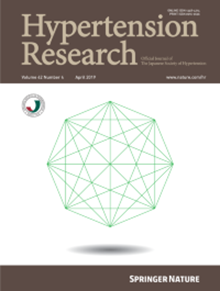Aorticorenal ganglion ablation for blood pressure lowering in canine models
IF 4.3
2区 医学
Q1 PERIPHERAL VASCULAR DISEASE
引用次数: 0
Abstract
Studies have shown that renal denervation (RDN) can lower blood pressure (BP) in patients with refractory hypertension, but issues such as renal sympathetic nerve reinnervation and suboptimal BP reduction remain unresolved. In this study, we identified the aorticorenal ganglion (ARG) in canines by observing ambulatory BP responses following electrical stimulation of the ARG. We injected cholera toxin subunit B combined with Alexa Fluor™ 555, a nerve tracer, into the identified ARG and confirmed its innervation of the renal artery and kidney by observing fluorescence in adjacent tissues. Twelve experimental canines were divided equally into an intervention group, which received ARG ablation using 95% ethanol, and a sham control group, which received normal saline. Our results demonstrated that ARG ablation significantly reduced systolic, diastolic, and mean arterial pressures, with minimal impact on heart rate. Additionally, ARG ablation lowered plasma and renal cortex norepinephrine levels, and reduced tyrosine hydroxylase expression in the renal cortex. No adverse events were observed during the 3-month follow-up period. These findings suggest that the ARG may serve as a novel target for RDN and could offer a therapeutic alternative for patients who do not respond to or experience elevated BP after RDN.

求助全文
约1分钟内获得全文
求助全文
来源期刊

Hypertension Research
医学-外周血管病
CiteScore
7.40
自引率
16.70%
发文量
249
审稿时长
3-8 weeks
期刊介绍:
Hypertension Research is the official publication of the Japanese Society of Hypertension. The journal publishes papers reporting original clinical and experimental research that contribute to the advancement of knowledge in the field of hypertension and related cardiovascular diseases. The journal publishes Review Articles, Articles, Correspondence and Comments.
 求助内容:
求助内容: 应助结果提醒方式:
应助结果提醒方式:


